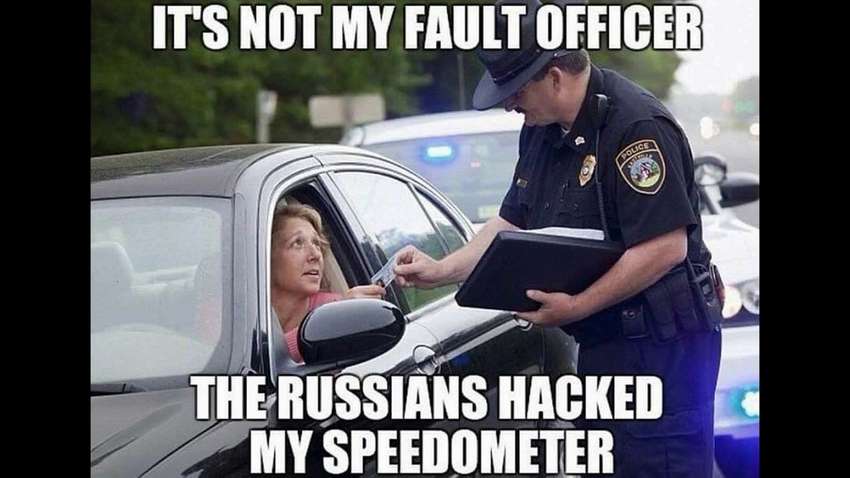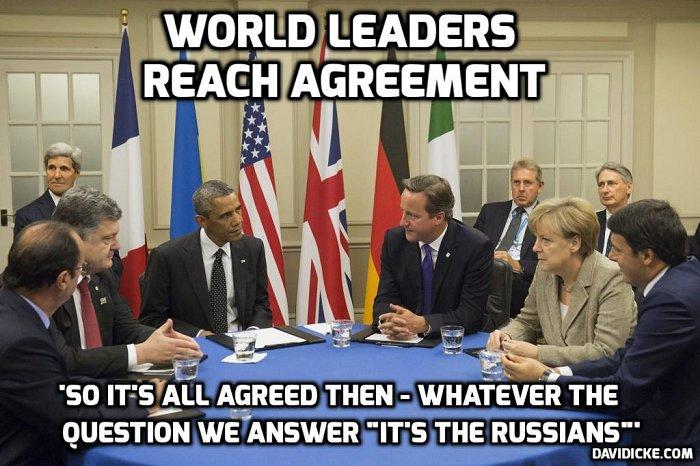Abstract
The article reveals the construction of the image of Russia that exists in the space of a foreign-language cultural community using imagological approaches. Being originally an area of literary criticism and comparative studies of "Other" images created in literature, now imagology is represented as a branch of social and humanitarian knowledge. Imagological approach is to focus "Other" with study of the purposeful formation of the country's image. Today becomes important to understand the vision of another, to decipher another discursive code in connection with the growing tension in international relations, political instability, the deepening confrontation of leading powers and socio-cultural disasters. Under the influence of a number of factors of non-linguistic nature, the national image of Russia is subjected to conceptual modification. Language becomes the most important guide to the world of "foreign" meanings, the mentality and views of another people, Systematization of language means of expressing identified the following destructive technologies: intentional news framing. changing the pragmatic focus, deconstructing stereotypes, the use of aggressive and conflictogenic vocabulary; the use of conflictogenic themes and points of confrontation. The study of the image of Russia and Russians formed by modern Western media suggests its progressive negativization with the identification of certain destructive technologies.
Keywords: Aggressive and conflictogenic vocabularyconflictogenic themesimage of Russiaprogressive negativization
Introduction
Originated in the 50s of the XX century (Carré, 1947) as a research area of comparative-historical literary studies, imagology, thanks to Gyuard (1951), has shifted attention from the study of literary influences to the perception of ¨Other¨. The extreme point of view on the imagology is reflected in the position of Dyserinck (1966). Considering the image of another country in literature, Dyserinck (1966) even questioned the existence of national identity, and presented the nation as a temporary mental construction, a model of thinking. The original position in the study of the image of others is presented in the works of Pageaux (1989). Pageaux believed that one should not pay attention to the credibility of the discourse about a foreign country. The purpose of imagology should be the study of techniques for an image constructing. Today imagology studies the image of “Other” on the example of literary texts, explores ideas about another people / country with the help of cultural patterns and value systems, analyzes stereotypical images of " other " ethnic groups, countries, and cultures in a foreign perceiving consciousness, and describes the technology of creating images as part of discursive practices.
Fundamentals of imagology formulated by Dyserinck were developed in the writings of contemporary scholar Leerssen (2016), which studies the national character as discursive representations of ethnotypes (stereotypical attributions of national character). Leerssen talks about the decline of printed fiction and the growth of other information environments (as cited in Zocco, 2018).
Being originally an area of literary criticism and comparative studies of "Other" images created in literature, now imagology is represented as a branch of social and humanitarian knowledge that studies the formation of an image (a person, organization or country) with a specific purpose. The key concept of imagology is image. The media image of the country is becoming an important direction of the state's information policy. The effective use of virtual space and mediatization of communication promote the image of the country and its leaders.
Problem Statement
Recently, interest in imagological subjects has increased in Russia (Mingda, 2017; Set’ko, 2016; Trykov, 2017; Uryadova, 2015). However, some of the Russian scholars do not share the position of H. Dyserinck, believing that such an approach serves as a good basis for the process of globalization, but it leads to the weakening of national consciousness and erasure of national identity. Russian scholars study the mental models that H. Dyserinck insisted on, but from the perspective of self-identification of a particular nation and their objectification in the literature (Oshchepkov, 2010). Russian research is based on the concepts of M.-F. Gyuard and D.-A. Pageaux, who paid great attention to patterns of perception. of the "Other" and techniques for constructing its image. Russian scholars argue about the field of imagology research: to study only hetero-image or auto-images as well (Ryabchikova, 2018).
Catalan writer Xavier Roig notes in his book “L'enigma rus” (the Russian Enigma) that the origin of the bad image of Russia in the West is a puzzle that has never been clarified, so it remains an enigma. This was the case during tsarist times, during Soviet times, during communism and now the image of Russia remains the same (Benítez, 2019).
The image of Russia in the culture of another country / other countries can be attributed to the branch of knowledge, which is called "territorial image" or "image of the territory". According to the criteria of image classification, the image of Russia is collective (not individual), Two other criteria – the sign of the formed attitude (positive / negative) and the content are subject to description, since they depend on the specific situation. The genre typology of the media texts studied covers news and factual genres.
Research Questions
One of the key concepts of imagology is the opposition "own – other / foreign", For the researcher the study of the image of Russia is supposed to be at the junction of two key concepts of imagology – the national auto-image and the hetero-image formed in the Western press.
The study sets the following research questions:
– What kind of information is chosen to transfer the image of Russia?
– What technologies are used to build the image of Russia?
– Do existing stereotypes influence public opinion?
Purpose of the Study
The objective of the research is as follows:
– to study the perception of Russia by the media consciousness of the Spanish-speaking countries;
– to analyze different forms of ‘otherness’ regarding the image of Russia;
– to describe the technology of creating images as part of discursive practices.
Research Methods
To study the image of Russia in the Western media, the theoretical and methodological principles of imagology were taken as a basis. They can be summarized as follows.
1. It is important to study the image of the "Other" in the perceiving consciousness of another information environment.
2. The image of the "Other" and its national identity is represented as a discursive object.
3. The Image of the "Other" appears as a mental construction, a model of thinking in the perceiving consciousness.
4. Stereotypes as mental constructions are characterized by certain dynamics.
The study analyzed materials from Spanish-language media of 2018–2020 (el País, el Mundo, ABC) using discourse analysis, cognitive approach, lexical, semantic, and linguostylistic analysis.
Findings
Dependence of the country's image on the news alignment
The structure of the image of Russia is multicomponent. The components of the image of Russia are: the domestic political image, the foreign policy image, the image of the head of state and others. The Spanish media sets an information "agenda", its news framing in relation to Russia.
Thus, a significant place in news blocks is given to negatively marked headings: conflictos geopolíticos con la participación de Rusia
There are significantly fewer positively marked or axiologically neutral headings: el potencial energético ruso
Media directly participate in creating the image of Russia, focusing the audience's attention on some events and leaving others out of the picture, demonstrating a selective attitude towards the thematic repertoire ans news content.
The second most frequent technique is the discussion of conflict-related topics, the use of points of confrontation. Such points of confrontation can be identified in relation to the territory of the former Soviet Union: Russian language (in Ukraine and Baltic States); war in Donbas, etc.
Another common technique is to belittle the role of Russia in the international arena, which is linguistically expressed in such terms as: minimizar el papel de Rusia
A pesar de que la URSS tuvo más de 27 millones de víctimas en la confrontación con los nazis, Estados Unidos solo destacó su propio papel y el de Gran Bretaña para ganar la guerra. (https://www.semana.com/mundo/articulo/rusia-indignada-con-ee-uu-por-minimizar-su-papel-en-la-ii-guerra-mundial/670389)
Cada cierto tiempo Moscú denuncia “los intentos evidentes de
En dos artículos separados, el diario de Turín 'La Stampa' denunció que el 80% del material enviado por Moscú era
Negatively marked vocabulary as a means of forming a reader's position
Analysis of news articles from Western Media has revealed certain destructive technologies in creating the image of Russia. The most common technique is the use of aggressive and conflictogenic vocabulary: danger, threat (real, main), as well as negatively marked metaphors: "hot breath of the Russian bear", "floating corpse of Russia", etc.
One of the classification criteria for the image of Russia is the sign of the attitude formed by the audience. Using examples from an electronic publication https://www.elespanol.com in the period from January to April 2020, it is possible to predict the position that readers are forming.
El crudo se hunde: se deja un 8% tras
La OPEP
El precio del petróleo se desplomó este viernes ante el
La UE acusa a Rusia de
El Kremlin asegura que
El Parlamento Europeo estudia
Rusia estrena una central nuclear en barco,
These examples allow us to model the sign of the attitude formed as a classification criteria for the image of Russia as you can see from the Table
The presented tools are formally characterized by lexemes of negative semantics: la negative the refusal, el fracaso the failure, difundir “fake news” spread “fake news”, desestabilizar destabilize prohíbir prohibit; verbs in the negative form: no logra Russia doesn't make it.
The constructed model with negatively marked lexemes imposed on the addressee creates an artificial image formed for the purpose of hidden impact of the target audience.
Stereotypes and Changing the Sign Assessment
Ways to create stereotypes about Russia can be traced on the example of the questionnaire of Myra Leon Basurto, a student of the faculty of political science of the National UniversityFederico Villareal, which summarizes the image of Russia that has developed in the ordinary citizen of Peru through the media.
– Russia is communist, socialist.
Russia is great and powerful.
Russia is America's natural enemy. The Americans are the good and the Russians are the bad. Thanks to films like Captain America, youth still believe this.
– Russia is thought to be extremely strict with its customs and repressive with human freedom.
You have a stereotypical image of the Russians. White, in fur coats, drinking vodka, playing with bears, always angry women.
There is an idea that Russians are very cold, unfriendly people. This I believe because of the large number of films in which they are painted in this way or as spies and also because their language is considered to sound like "shouting" or ”orders".
Vladimir Putin is the most famous Russian for Peruvians. He is the vivid image of authority and power. For example, when there is news that a thief was released or when the police do not know the whereabouts of a murderer it is common to hear “This would not happen with Putin”.
(https://es.quora.com/Cu%C3%A1nto-conocen-los-peruanos-de-Rusia-de-su-gente-y-de-su-
cultura-Qu%C3%A9-imagen-de-Rusia-tienen-en-Per%C3%BA)
The image of Russia formed in Peru under the influence of cinema is represented by hetero-stereotypes, which clearly differ from the auto-stereotypes that exist in the minds of Russians.
Within the framework of hetero-stereotypes, we can consider the lexical and semantic compatibility of the Spanish adjective ruso Russian, given in the work of Pirozhenko (2015).
Among the presented lexemes, there are several that characterize material values and objective phenomena: ensaladilla rusa Russian salad, té ruso Russian Tea, frío ruso Russian Cold, nieve rusa Russian snow, baño ruso Russian bath, matrioshka rusa Russian matrioshka, troika rusa Russian troika, revolución rusa Russian Revolution, iglesia rusa Russian church. Others are stereotyped. forming national identity with negative axiological content: ruleta rusa Russian roulette, ruso borracho Russian drunk, mafia rusa Russian mafia, espía ruso Russian spy, locura rusa Russian madness.
The idea of Hugo Dyserinck that etnostereotypes are temporary mental constructions is confirmed in modern discourse. Ethno-cultural stereotypes about Russia are also characterized by certain dynamics foreign media. Thus, the metaphor of the "bear" became widespread in the 1980s and the stereotype "vodka" was updated in the 1990s (Orlova, 2013). At the same time, the metaphor of "Russian bear" – el oso ruso, mostly is related to political discourse and represents Russia as something big, dangerous. aggressive and unpredictable.
Objects of material culture may also be subject to political coloring. In particular, we are talking about Souvenirs from Russia – matryoshka, matriuska. – muñeca rusa, The text criticizes the policy of Mariano Rajoy by comparing it with a matryoshka doll and pointing out that it is a useless artifact.
Our democracy believes that efficiency is about opening windows on all sides. It is like a desperate split, like the Russian matryoshkas, which are just a useless sequence of colored boxes – parecido a … esas muñecas rusas ... una sucesión inútil de cajitas pintadas (González, 2011).
Changing the pragmatic focus and mark of assessment contributes to the negativization of the image of Russia.
Any information is supplemented by existing stereotypes in the public mind. Media reality creates new stereotypes. It has become fashionable to combine the concept of "Russian" with the word "hacker" (see Figure


The number of accusations against Russia has become critical in the Western media. Playing with stereotypes using the hash tags #RussiansDidIt and #RussiaDidIt is gaining incredible popularity and is applied ironically to any unpleasant incidents (see Figure

The core structure of Russia's image in the Spanish press is generally negative. It is possible to identify such traits as aggressiveness, authoritarianism, the weakness of the government, corruption. Positive elements are insignificant and located on the periphery of the image structure of Russia.
Conclusion
-
The Image of Russia in the Western media is very different from the approach created by classical Russian literature, which described the world of the "Other" not as "alien", but as "different".
-
The research material taken from publications in Spanish shows that the image of Russia and Russians, according to the mechanism of formation and dissemination, is not natural and spontaneously formed.
-
The Image of Russia is created intentionally for the purpose of providing emotional and mental impact and is introduced into the mass consciousness of the Western reader with the help of various tools and techniques.
-
Systematization of language means of expressing identified the following destructive technologies: intentional news framing. changing the pragmatic focus, deconstructing stereotypes, the use of aggressive and conflictogenic vocabulary; the use of conflictogenic themes and points of confrontation.
The study of the image of Russia and Russians formed by modern Western media suggests its progressive negativization with the identification of certain destructive technologies.
References
- Benítez, J. (2019). Xavier Roig: “Esigma de dónde viene la mala imagen que tiene Occidente de Rusia”. https://mundo.sputniknews.com/radio_hoy_con_nosotros/201904181086783558-occidente-imagen-de-rusia/
- Carré, J.-M. (1947). Les écrivains francais et le mirage allemande 1800-1940 [French writers and the German mirage 1800-1940]. Boivin.
- Dyserinck, H. (1966). Zum Problem der “Images” und “Mirages” und ihrer Untersuchung im Rahmen der vergleichenden Literaturwissenschaft [On the problem of “images” and “mirages” and their investigation in the context of comparative literature]. Arcadia, 1, 107-120.
- González, J. (2011). Minimalismo Mariano. ABC. https://www.pressreader.com/
- Gyuard, M.-F. (1951). La littérature compare [The literature compares]. Presses Universitaires de France.
- Leerssen, J. (2016). Imagology: On using ethnicity to make sense of the world. Iberic@l, Revue d'études ibériques et ibéro-américaines, 10, 13-31.
- Mingda, L. (2017). Ponatia imagologia i imidzelogia v rossijskoj i kitajskoj sociogumanitarnoj nauke [The Concept of “Imagology” and “Image Science” in Russian and Chinese Social and Humanitarian Sciences]. Society: Philosophy, History, Culture, 8, 1-5. Retrieved from https://www.researchgate.net/publication/319138583_Ponatia_imagologia_i_imidzelogia_v_rossijskoj_i_kitajskoj_sociogumanitarnoj_nauke/citation
- Orlova, О. G. (2013). Diskursivnaya teoriya stereotipa [Discursive theory of stereotype] (Doctoral Dissertation). Kemerovskiy gosudarstvenny universitet.
- Oshchepkov, A. R. (2010). Imagologiya [Imagology]. Znanie. Ponimanie. Umenie, 1, 251-253 (in Russian).
- Pageaux, D.-H. (1989). De l’imagerie culturelle a l’imaginaire [From cultural imagery to the imaginary]. In Précis de littérature comparée (pp. 134-161). Presses Universitaires de France.
- Pirozhenko, O. (2015). La imagen de Rusia en la prensa valenciana (Doctoral Dissertation). Universitat de Valencia.
- Ryabchikova, E. E. (2018). Imagologiya kak razdel literaturovedcheskoy komparativistiki [Imagology as a part of comparative literary studies]. Slovo. ru: baltijskij accent, 9(2), 52-59.
- Set’ko, O. A. (2016). Pol’skij test v russkoj literature pervoj pol. XX v.: mifopo`eticheskie i avtobiograficheskie aspekty [Polish text in Russian literature of the first half of the twentieth century: mythopoetic and autobiographical aspects] (Doctoral Dissertation). Minsk.
- Trykov, V. P. (Ed.). (2017). Rossiya v literature Zapada: kollectivnaya monografiya [Russia in the literature of the West: Collective monograph]. MPGU.
- Uryadova, A. V. (2015). Using the imagology to study the image (impression) of Soviet Russia (USSR) among Russian emigrants. Vestnik Yaroslavskogo gosudarstvennogo universiteta. Seriya Gumanitarnyye nauki, 4(34), 32-36. (in Russian)
- Zocco, G. (2018). Perspectives in Imagology. https://networks.h-net.org/node/73374/ announcements/897788/new-perspectives-imagology
Copyright information

This work is licensed under a Creative Commons Attribution-NonCommercial-NoDerivatives 4.0 International License.
About this article
Publication Date
08 December 2020
Article Doi
eBook ISBN
978-1-80296-096-9
Publisher
European Publisher
Volume
97
Print ISBN (optional)
-
Edition Number
1st Edition
Pages
1-649
Subjects
Linguistics, modern linguistics, translation studies, communication, foreign language teaching, modern teaching methods
Cite this article as:
Moiseenko, L. (2020). Imagology And Formation Of The Image Of Russia In Foreign Media. In V. I. Karasik (Ed.), Topical Issues of Linguistics and Teaching Methods in Business and Professional Communication, vol 97. European Proceedings of Social and Behavioural Sciences (pp. 464-472). European Publisher. https://doi.org/10.15405/epsbs.2020.12.02.63

